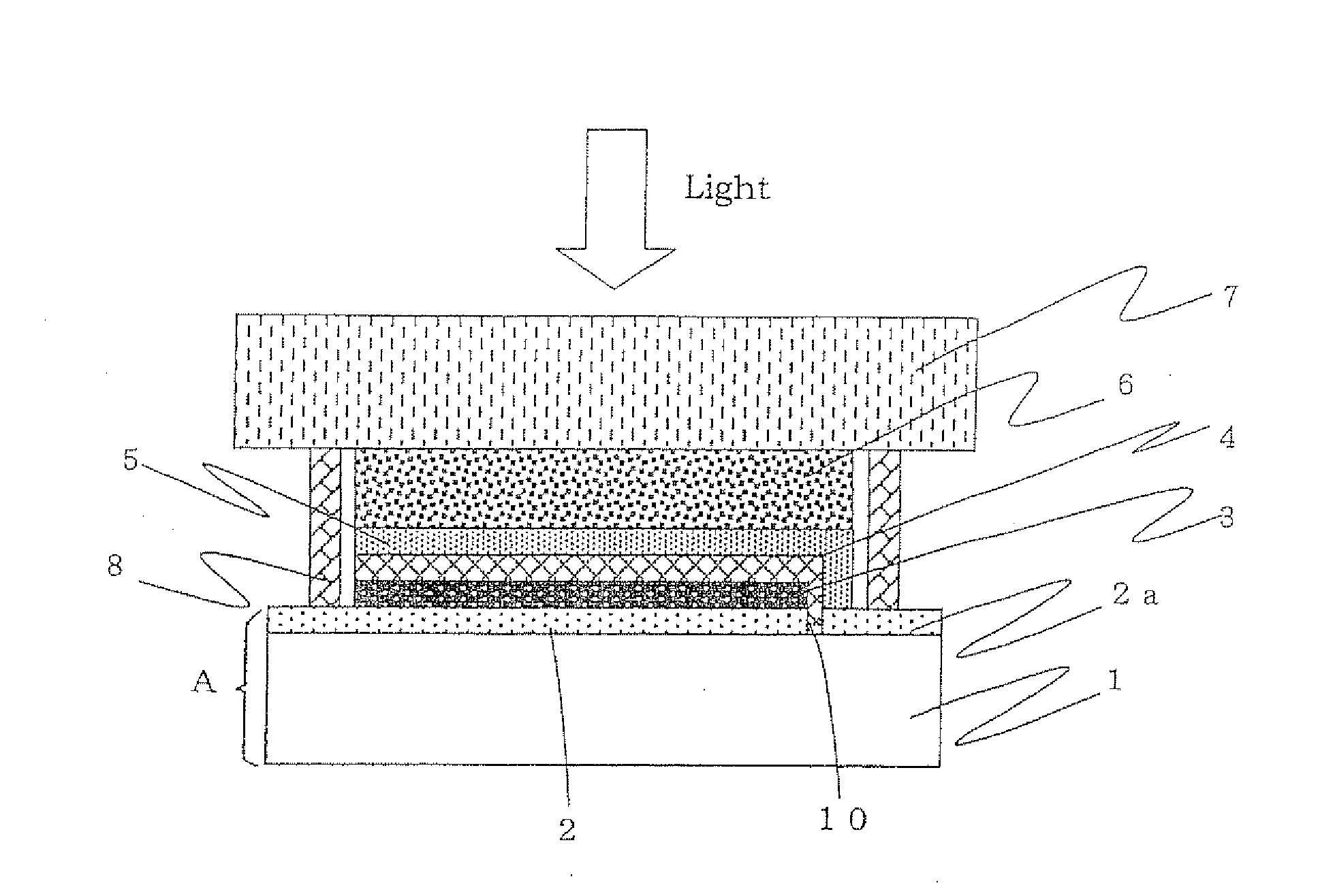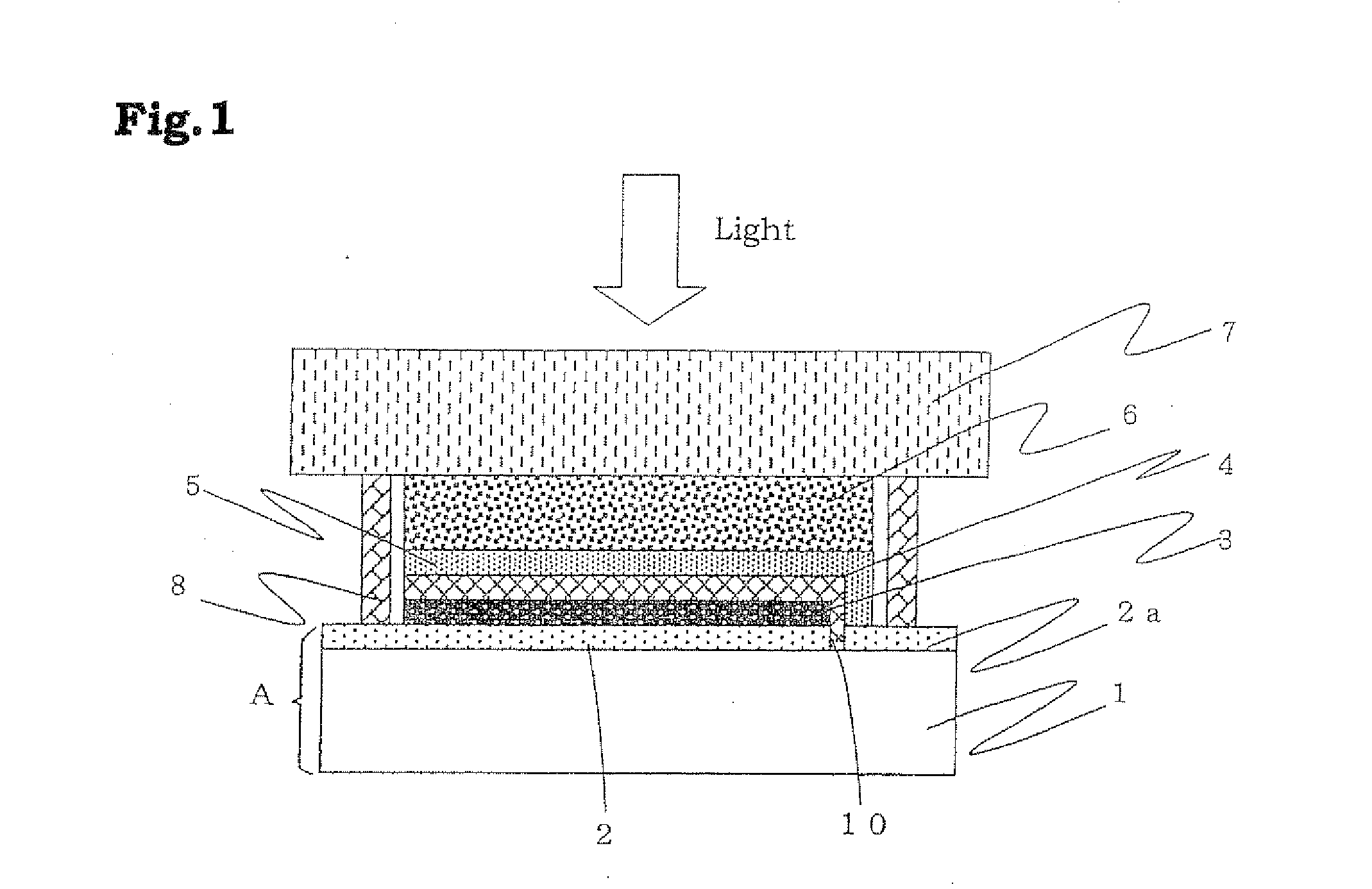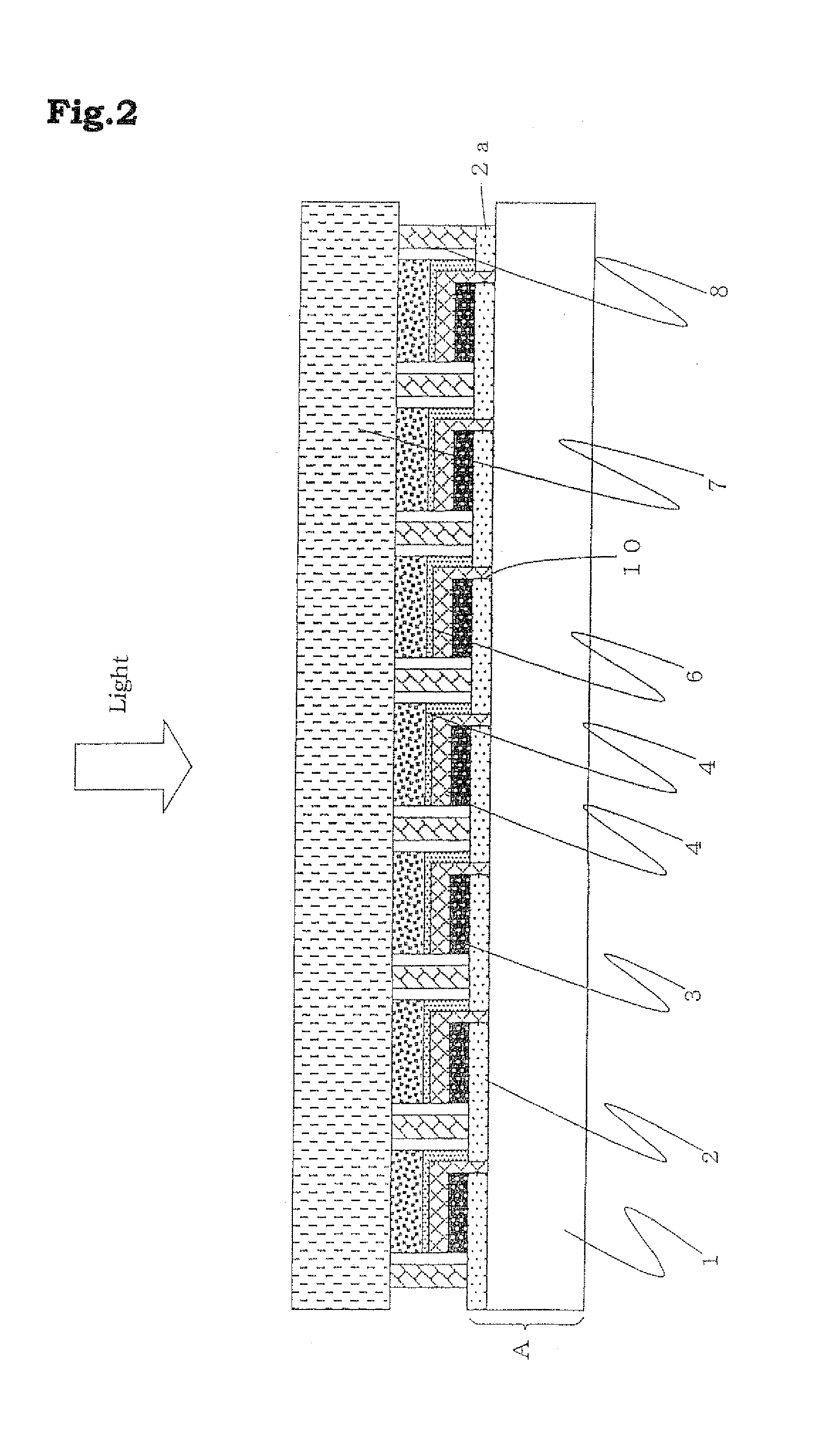Photosensitized solar cell, production method thereof and photosensitized solar cell module
a solar cell and photosensitization technology, applied in the direction of pv power plants, sustainable manufacturing/processing, final product manufacturing, etc., can solve the problems of not being solved, high production cost of silicon substrate, and high production cost, so as to reduce weight, improve characteristics, and produce easily
- Summary
- Abstract
- Description
- Claims
- Application Information
AI Technical Summary
Benefits of technology
Problems solved by technology
Method used
Image
Examples
embodiment 1-1
[0049]FIG. 1 is a schematic cross-sectional view showing Embodiment 1-1 of the photosensitized solar cell of the present invention. This photosensitized solar cell of Embodiment 1-1 (occasionally abbreviated as the solar cell hereinafter) is of a type having a conductive layer 5 between a porous insulating layer 4 and a porous semiconductor layer 6.
[0050]More specifically, this solar cell is provided with a conductive substrate A in which a conductive layer 2 (hereinafter referred to as the first conductive layer 2) is formed on a substrate 1, and a catalyst layer 3, the porous insulating layer 4, the conductive layer5 (hereinafter referred to as the second conductive layer 5), the porous semiconductor layer 6 with a photosensitizer adsorbed thereon and a translucent cover member 7, which are sequentially formed on the first conductive layer 2, and the porous insulating layer 4 and the porous semiconductor layer 6 contain an electrolyte. A sealing member 8 is provided on the outer c...
embodiment 1-2
[0119]FIG. 2 is a schematic cross-sectional view showing a solar cell module in which a plurality of the solar cells of Embodiment 1-1 are electrically connected in series, and FIG. 3 is a schematic cross-sectional view showing a connecting portion of two solar cells in the solar cell module of FIG. 2. In FIGS. 2 and 3, the same reference numerals are given for the same components as the components in FIG. 1.
[0120]In producing this solar cell module, the conductive layer formed on the substrate 1 is first patterned at predetermined intervals by a laser scribe method to form a plurality of scribe lines with the conductive layer removed. Thus, the plural first conductive layers 2 electrically separated from one another are formed to offer a solar cell forming region on each of the first conductive layers 2.
[0121]Among the plural first conductive layers 2, the first conductive layer 2 at one end in a direction orthogonal to the scribe line is formed into a narrow width, on which first ...
embodiment 2-1
[0128]FIG. 4 is a schematic cross-sectional view showing Embodiment 2-1 of the photosensitized solar cell of the present invention. This photosensitized solar cell of Embodiment 2-1 is of a type with no conductive layers 5 between the porous insulating layer 4 and the porous semiconductor layer 6 in Embodiment 1-1. In FIG. 4, the same reference numerals are given for the same components as the components in FIG. 1.
[0129]Points of Embodiment 2-1 different from those of Embodiment 1-1 are mainly described hereinafter.
[0130]The solar cell of Embodiment 2-1 is primarily similar to that of Embodiment 1-1 except that the porous semiconductor layer 6 is formed from above the porous insulating layer 4 over the extraction electrode 2a. In Embodiment 2-1, the porous semiconductor layer 6 serves also as the second conductive layer in Embodiment 1-1, so that it is preferable that the electric resistance of the porous semiconductor layer 6 is low (about 40Ω / □ or less) or the length of the porous...
PUM
 Login to View More
Login to View More Abstract
Description
Claims
Application Information
 Login to View More
Login to View More - R&D
- Intellectual Property
- Life Sciences
- Materials
- Tech Scout
- Unparalleled Data Quality
- Higher Quality Content
- 60% Fewer Hallucinations
Browse by: Latest US Patents, China's latest patents, Technical Efficacy Thesaurus, Application Domain, Technology Topic, Popular Technical Reports.
© 2025 PatSnap. All rights reserved.Legal|Privacy policy|Modern Slavery Act Transparency Statement|Sitemap|About US| Contact US: help@patsnap.com



